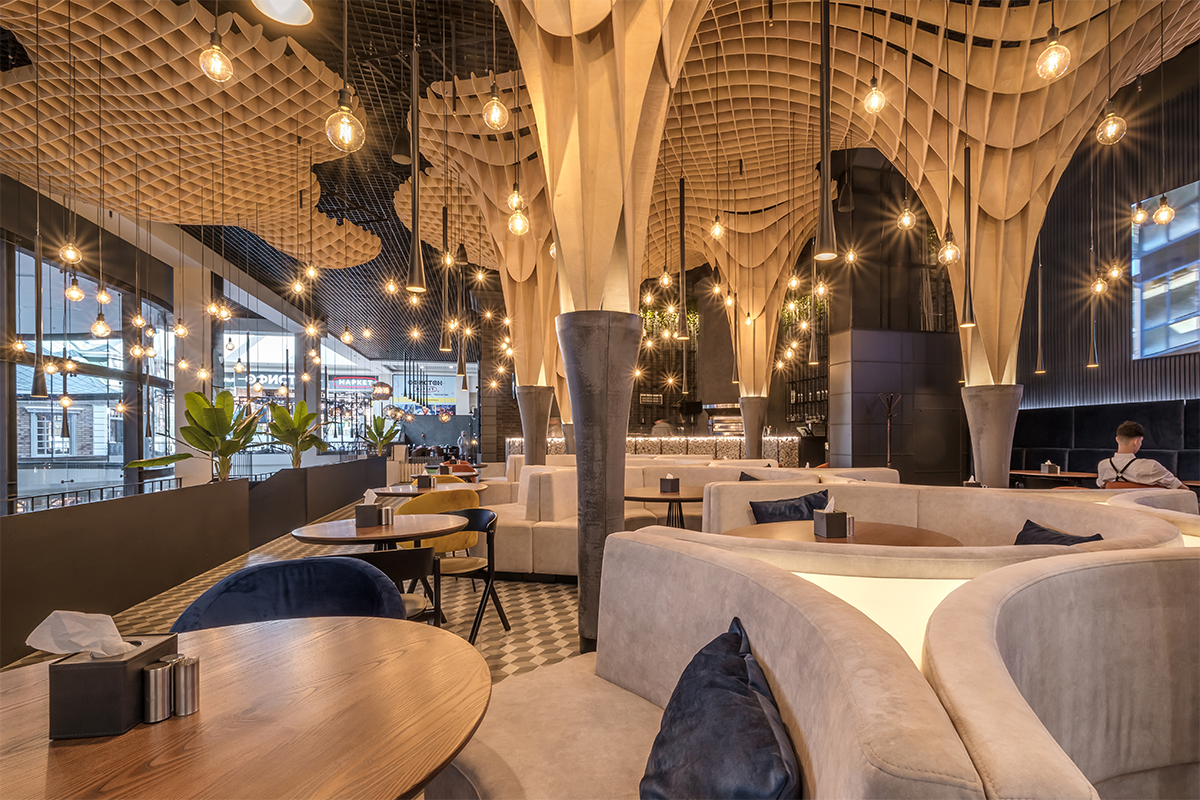Fine Dining Experience Islamabad: Enjoy Luxurious Cooking Delights
Fine Dining Experience Islamabad: Enjoy Luxurious Cooking Delights
Blog Article
Savor Genuine Oriental Cuisine With a Pan-Asian Twist for a Culinary Experience
Embarking on a culinary trip via authentic Eastern cuisine, improved with a Pan-Asian spin, supplies an one-of-a-kind possibility to explore the abundant tapestry of flavors that specify the region's varied culinary traditions. As you ponder these luring dishes, think about the social narratives and historic influences that form them, each bite using a story waiting to be found. Best ambiance restaurants Islamabad.

Discovering Pan-Asian Tastes
In the realm of worldwide gastronomy, Pan-Asian cuisine attracts attention for its impressive diversity and the harmonious interaction of flavors from various Asian societies. This culinary method celebrates the one-of-a-kind ingredients and rich traditions located across the continent, creating a tapestry of preferences that is both rewarding and fascinating. Key to Pan-Asian food is its capability to stabilize different flavors-- sweet, salty, spicy, and sour-- while highlighting the freshness and top quality of each ingredient.
From the umami-rich soy sauce of Japan to the fiery chili peppers of Thailand, Pan-Asian food uses a comprehensive scheme of flavors. These elements are typically integrated in innovative ways, enhancing recipes with layers of intricacy. For circumstances, making use of fragrant natural herbs such as lemongrass and cilantro, usual in Vietnamese and Thai cuisine, adds a rejuvenating illumination to dishes, while the consolidation of coconut milk provides a velvety, rich appearance.
The focus on fresh produce and aromatic seasonings guarantees that each meal is not just a banquet for the preference buds yet also for the detects. Pan-Asian food invites restaurants to embark on a cooking trip, exploring the large and differed landscapes of Asian gastronomy with every bite.
Fusion Recipes to Attempt
While Pan-Asian cuisine is celebrated for its traditional flavors, the modern cooking landscape is significantly embracing combination recipes that blend these classic components with impacts from various other regions. This ingenious technique not just honors the abundant heritage of Eastern culinary arts yet also presents novel taste experiences that interest contemporary tastes buds.
An archetype of such a combination recipe is the Korean-Mexican taco, where seasoned bulgogi beef is covered in a cozy tortilla, topped with kimchi and a spicy gochujang-infused salsa. This mix marries the bold, tasty tastes of Korea with the vibrant, fresh elements of Mexican food. In a similar way, sushi burritos have obtained appeal, joining together the delicate creativity of Japanese sushi with the passionate, hand-held convenience of a burrito, commonly including combination ingredients like tempura shrimp and avocado with a drizzle of wasabi mayo.
One more notable meal is Thai curry ramen, which infuses the luscious, fragrant seasonings of Thai curry right into the comforting broth of traditional Japanese ramen, producing a harmonious mix that entices the senses. These blend meals extend beyond simple novelty; they stand for a cooking dialogue in between societies, urging exploration and innovation in the globe of Pan-Asian food.
Vital Active Ingredients and Flavors
To absolutely appreciate Pan-Asian food, one must comprehend the crucial active ingredients and flavors that develop its structure. This varied cooking style attracts from a rich tapestry of Eastern practices, utilizing a harmonious mix of flavors and appearances.
Aromatic aspects are critical, with garlic, ginger, and lemongrass being ubiquitous throughout various Pan-Asian dishes. These ingredients give a great smelling base that boosts the intricacy of flavors. Flavors such as celebrity anise, cardamom, and cinnamon present warmth and personality, echoing impacts from areas like China and India.
Cooking Strategies and Tips
Mastering the art of Pan-Asian cuisine calls for knowledge with its distinct food preparation techniques, each adding to the lively tapestry of flavors this cooking custom is commemorated for. Central to these approaches is the stir-fry, a quick food preparation technique that maintains the nutritional honesty and vibrant shades of ingredients. Using a frying pan, the stir-fry method enables even heat circulation, important for achieving the characteristic structure and flavor equilibrium of Pan-Asian dishes.
Another fundamental technique is steaming, specifically widespread in Chinese food. This mild approach keeps the natural tastes and nutrients of ingredients, making it perfect for fish and shellfish and vegetables. Dumplings, a beloved staple, typically benefit from steaming, resulting in soft, delicious appearances.
Grilling, also integral, passes on great smoky midsts to recipes such as Oriental bulgogi or Japanese yakitori (best asian restaurant Islamabad). This method often entails marinading ingredients, allowing tastes to penetrate deeply before food preparation over an open fire or hot plate
Lastly, understanding the art of balancing tastes-- pleasant, sour, salty, bitter, and umami-- is vital. Appropriately layering these components can raise a meal from ordinary to extraordinary, using a complex and pleasing culinary experience that symbolizes the essence of Pan-Asian cuisine.
Dining Experiences Worldwide
Around the world, Pan-Asian cuisine uses an unequaled eating experience, commemorated for its rich tapestry of tastes and vibrant presentations. This cooking sensation has gone beyond social borders, catching the hearts and tastes buds of food enthusiasts worldwide. In multicultural cities this article like New York, London, and Sydney, Pan-Asian restaurants work as melting pots where culinary practices from Thailand, Japan, China, and beyond converge, providing restaurants with a diverse mix of meals that highlight the area's diversity.
The international charm of Pan-Asian cuisine depends on its capability to use both authenticity and development. Chefs skillfully marry typical active ingredients such as lemongrass, soy sauce, and miso with contemporary techniques, resulting in recipes that are both refreshingly new and acquainted. This combination enables restaurants to embark on a cooking trip that appreciates heritage while embracing modernity.
Additionally, dining experiences are raised through thoughtfully created settings that reflect the principles of Pan-Asian aesthetics. From minimal Japanese-inspired interiors to vivid Thai-themed areas, each dining establishment provides a distinct setting that complements the culinary offerings. Consequently, clients are not simply eating a dish yet partaking in a social experience, making Pan-Asian dining a really global sensation.
Verdict
The exploration of Pan-Asian cuisine offers a profound understanding of the intricate interaction of tastes and cooking practices throughout Asia. By embracing combination recipes such as Thai curry ramen and sushi burritos, the culinary journey not only highlights the adaptability of conventional active ingredients however also showcases cutting-edge modern-day strategies. This gastronomic experience, improved by essential spices and cooking techniques, provides a special chance to value the multiculturalism and culinary virtuosity that specify Pan-Asian food on an international scale.
Beginning on a cooking journey with genuine Asian cuisine, boosted with a Pan-Asian spin, offers an one-of-a-kind opportunity to check out the abundant tapestry of tastes that specify the region's diverse cooking traditions.In the world of international gastronomy, Pan-Asian food stands out for its exceptional diversity and the unified interaction of tastes from different Asian societies. Key to Pan-Asian cuisine is its capacity to balance different tastes-- wonderful, salted, spicy, and sour-- while highlighting the freshness and quality of each component.

Report this page